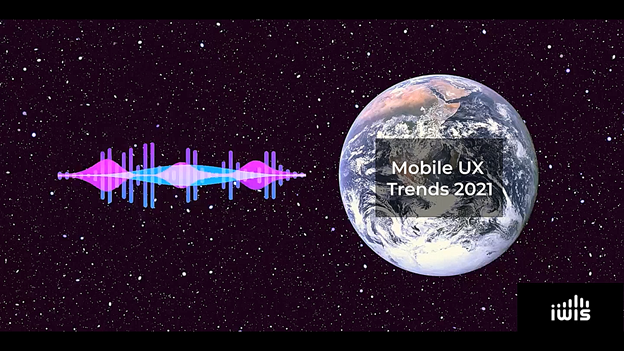Mobile UX Trends for 2021

What is in stock for trends in Mobile UX design for this year? Which of them are to shape the industry? How will they improve customer experience? Our observations are listed below:
| THE RISE OF SUPER APPS
For the past two decades, the mobile app development model remained the same — one app, one purpose. But recently, the industry started to moving quickly from single-purpose apps to super apps. Super app is a multi-purpose app (one app that is capable of doing many different things). Such apps strive to create ecosystems that cover all user’s needs so that users don’t have to switch to another app to solve their problems.
This trend originated in Asia. One notable example of such an app is WeChat, which combines a messenger, social media, and mobile payment app.
| VIDEO INTERACTIONS
The Covid-19 pandemic had a tremendous impact on our life. “Stay home, stay safe” became our basic instruction for the whole 2020 year. Hopefully, in 2021 after the vaccination, we will start to get back to our normal life. At the same time, this pandemic changed the way we work and communicate. Video conferencing software became one of the most in-demand tools in 2020.
In 2021 we will see more and more cases of video interactions integrated naturally into our daily routine. Telemedicine and video shopping will be the two most popular areas. Even when the Covid-19 pandemic ends (hopefully), many people will still prefer to rely on remote communications to solve their problems, especially when it comes to their health. It’s much safer to talk to doctors over the internet than visiting a clinic.
| 3D GRAPHICS WITH A FUNCTIONAL PURPOSE
3D graphics, first and foremost, should improve the efficiency of the interaction process and only then create a wow effect.
The sector of eCommerce apps can also benefitю 3D attracts attention and makes products look more appealing. This technique allows designers to integrate a 360 view of a particular product.
| SOPHISTICATED VOICE-BASED ASSISTANT
“Voice-based AI assistant, really? It’s a 2016 trend!” You right, voice-based assistants aren’t something new. We already have Apple Siri, Google Now, Amazon Alexa, and a dozen other assistants. Yet, most of them work more like voice-based shortcuts for common operations (i.e., “Alexa, what’s the weather” or “Siri, set the alarm to 8:00 am”), rather than powerful AI-based solutions.
The ultimate goal is to create a technology that will be capable of solving complex problems such as, “Should I buy a house now?” or “What college should I select for my kids?’ and be user-friendly at the same time.
The next-gen of AI assistant will have:
- Advanced personalization
- Touchless interactions
- User mood analysis
| FOCUS ON CROSS-PLATFORM APP OPTIMIZATION
What does it mean for product designers? It means that in 2021 we can and should optimize apps not only for mobile devices but also for a desktop experience. Why? Because it gives you access to a larger audience and allows you to create a seamless transition between platforms. Finally, users will decide what platform they want to use at each given moment.
| USEFUL DATA VISUALIZATION
The purpose of visualization is insight, not pictures for the sake of pictures. Data visualization is a lot more than beautiful visuals; it’s about a thorough understanding of the target audience and their needs and finding the best way to communicate valuable information to them.
| SUBTLE NEOMORPHIC DETAILS
Flat UI paired with minimalisms is the industry standard. To create something unexpected, designers try to go away from the Flat UI. One of the popular trends in 2020 was neu-skeuomorphism or neomorphism. This visual style uses design elements and textures that mimic the physical world. Neomorphism has one key difference from skeuomorphism: designers who apply neomorphism mimic the physical world for purely aesthetic purposes.
Similar to skeuomorphism, neomorphism makes it difficult to scale a design. So it’s better to avoid creating full-neomorph UIs.
However, it’s possible to introduce subtle neomorphic details such as icons or pseudo-3D-buttons in design. By doing that, you can add a “human touch” to the overall UX of your products and make them stand out from the crowd.
Functional controls designed using neomorphic style give users an impression that they can touch the controls with their hands due to realistic textures. It creates a feeling of connection between users and products.
| THE NEXT GENERATION OF AUGMENTED REALITY APPS
In September 2020, Mark Zuckerberg announced that Facebook would launch “the next step on the road to augmented reality glasses” next year.
Apple is rumored to have a secret team of hundreds of employees working on augmented reality projects. These are clear indicators that the industry is moving towards AR glasses. At the same time, both companies don’t have a product yet to share with customers, but they invest in AR technologies. And the best platform to pilot the AR tech is mobile.
| DATA SECURITY AND PRIVACY
Many users are concerned that large IT giants are profiling their activities. Most of us being in a situation when we browse for something on the web, for the next few weeks we see adverts for the same thing. Plus, massive data leaks made users reluctant to share their personal data.
Industry leaders aim to find a solution to some of these problems. For example, registration and log-in processes are steps in the user flow, where we typically share our personal data. In 2020 Apple introduced the Sign in with Apple feature, a private way to sign into apps and websites. Displaying a Sign in with Apple button in your app or website means that people can sign in or sign up with just a tap using the Apple ID.
